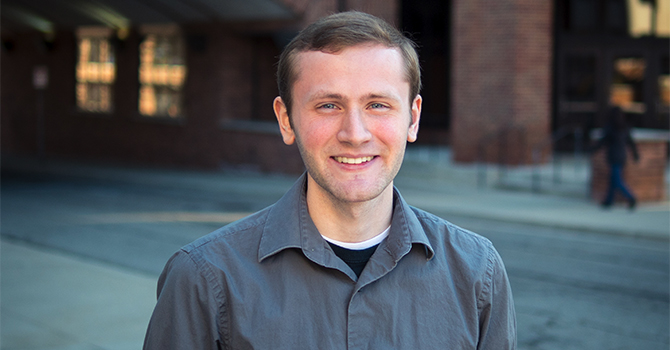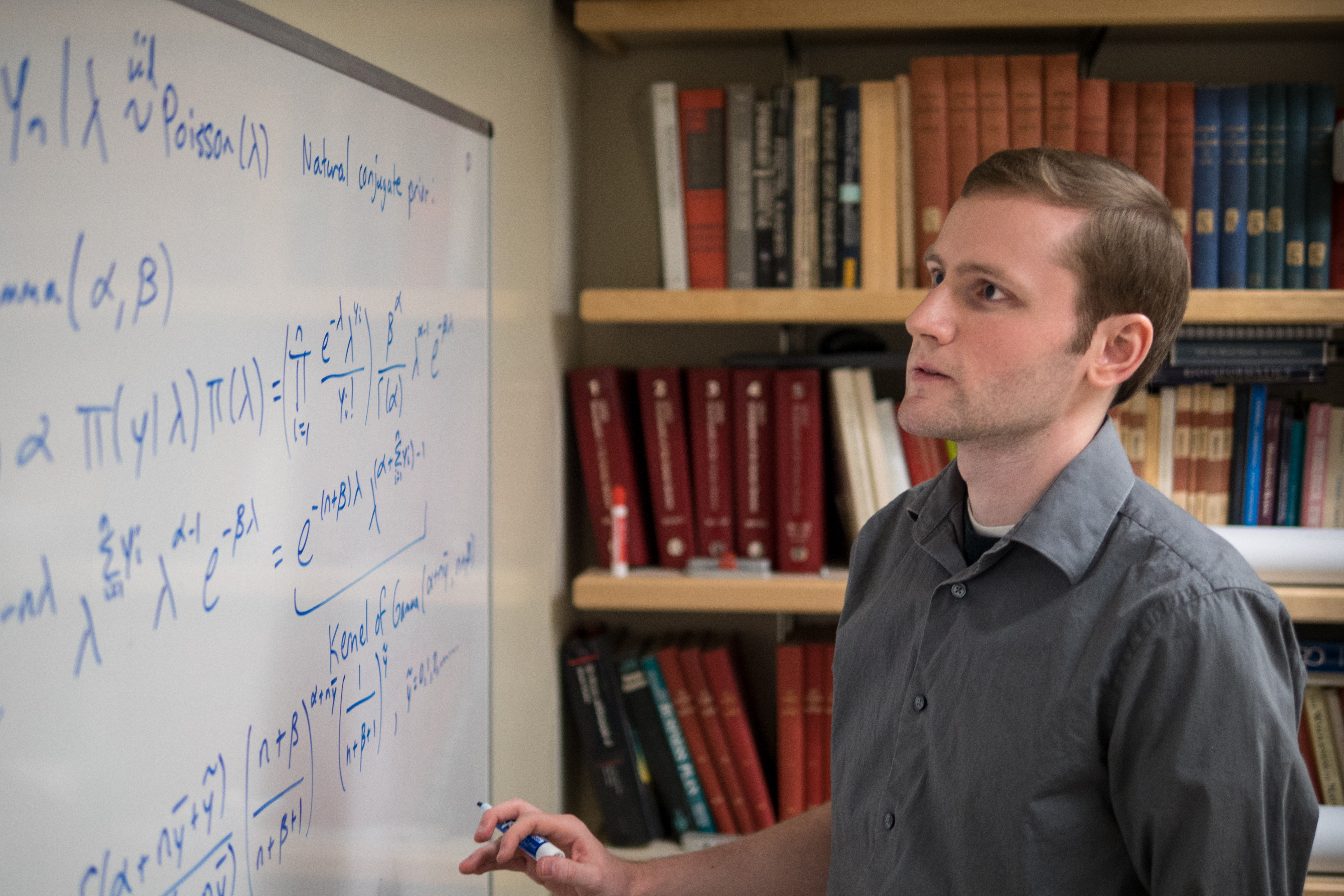Baseball Cards and Biostats: Finding Fulfillment in the Numbers

Jonathan Boss
MS ‘18 candidate, Biostatistics
As young as 10 years old, I knew I wanted to be a statistician. As a child, I loved sorting sports cards and reviewing the statistics on the back of each card. Recognizing my fascination with these numerical summaries, my mom informed me that I could have a career that involved analyzing data. I was immediately sold.
Most of my undergraduate studies were in pure math. I was a mathematics and statistics double major at Michigan State. As a grad student, it's been a transition to work in a more applied mathematical field, but I'm really enjoying it. The breadth and tangible benefit of our work with respect to human health truly differentiates biostatistics from other quantitative disciplines.
The turning point for me was attending the Big Data Summer Institute. The summer program here is unique in that it operates at the intersection of computer science, statistics, and human health. It is crucial to expose undergraduate students to the cutting edge of biostatistical research, in order to invigorate them about the direction the field is going.
The journey lectures at the Big Data Summer Institute are really compelling. When you read an academic paper, you're seeing the final result. You're not seeing the struggle that went into the paper. Learning that some of these groundbreaking ideas took a decade or more to fully develop was an important message to hear as a prospective graduate student. You're not going to understand everything immediately. It's a process, and you have to be patient with it.

Biostatistics is more than just analyzing biomedical data—and that's exciting. There is an increasing awareness in the biostatistical community that we need to be involved in all aspects of scientific research, including hypothesis generation, experimental design, data collection and processing, and—perhaps most importantly—communication of the results to people who might not have a background in statistics. To paraphrase a salient quote about statistical practice, biostatisticians should be collaborators, not consultants.
Increasingly, statisticians must also play the role of computer scientist. As a field, statistics is shifting toward the analysis of massive observational databases. Therefore, statisticians not only need to develop statistical methods that are mathematically principled, but they also need to design scalable and computationally efficient algorithms to implement those methods. What good is a statistical method if the algorithm that implements it takes 10,000 years to run? Computational literacy is becoming increasingly emphasized in our graduate training.
Faculty here at Michigan are really pushing the boundaries of statistical research. This was a primary reason I chose to attend graduate school at Michigan. Our faculty are excellent mentors and are completely devoted to our professional success.
For a top university, I don't feel that negative hyper-competitiveness you might expect. There is no divide between faculty and students—we interact all the time, formally and informally. The Biostatistics Student Association provides academic and professional workshops in addition to being the social hub of our department. The professors are regularly involved with the organization, whether it be assisting with professional or social events or addressing student feedback regarding the curriculum.
- Learn more about Biostatistics at Michigan Public Health.
- Hire a student like Jonathan.
- Support students like Jonathan.
